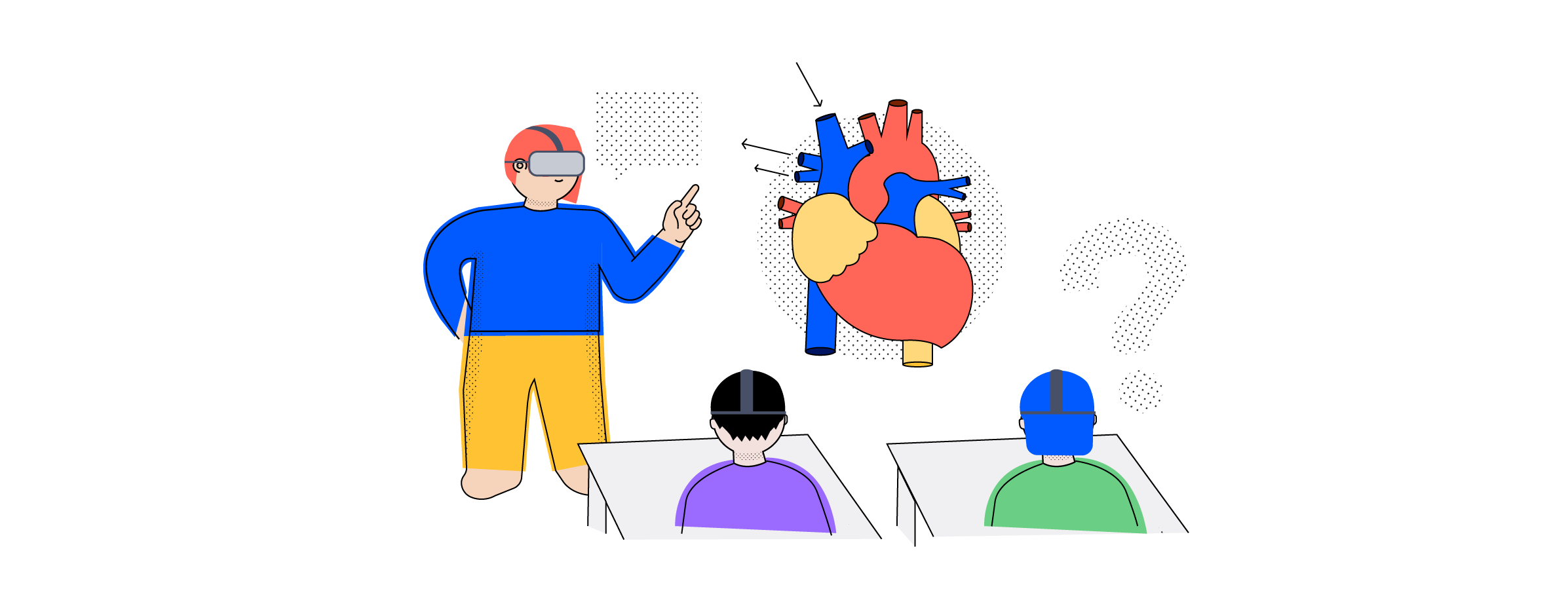Learning via immersive technologies such as VR, AR, and gamification can transform education as we know it. In this post, we dig into how
How immersive technologies can transform teaching

Gamification, virtual reality, augmented reality – even mixed reality … these all sound like futuristic gaming-centric mediums that have nothing to do with the way educators teach. But there’s a lot more to them than just the gaming aspect that makes them fantastic tools for modern-day teaching.
What defines immersive technologies?
Immersive technologies are any kind of technologies that extends reality or creates new realities. It enables users to look anywhere and see and experience content and a new reality.
Immersive technologies are highly interactive, visual and engaging technologies that connect the real world with a digital one – or creates an entirely new one. There are a wide variety of VR applications that can help educators create a whole new world to interact with for students.
Art projects, data visualization, science projects – even ‘traveling’ – can happen with immersive technologies. It gives students the opportunity to experience places and explore ideas they would otherwise never be able to reach.
Take a look at these inspiring edtech companies around the world that are pioneering digital learning.
Gamification feeds into the brain’s reward system
Gamification is game-design applied to a learning situation. It’s easy to understand for most students, as they have generally all tried some digital game or another. One very well-known gamification application is DuoLingo, the language learning platform that teaches people, not just students, new languages by making it into a quest with rewards where you can compete with other learners.

So because students are already familiar with a gaming world that includes rewards and challenges that gradually become bigger and harder, it’s the perfect pairing for a learning environment.
There’s also the added effect of dopamine being released in the brain with every reward, the chemical that triggers pleasure, motivation, and positive reinforcement. This makes the learning experience positive and ensures that students want to keep going.
Virtual reality takes you places you couldn’t otherwise go
Virtual and augmented reality applications offer students the opportunity to step into new places, situations, and roles that are otherwise impossible to access.
These are the top edtech trends of 2019 that you should look out for.
Besides the fun aspect of doing something ‘outside’ the classroom, virtual reality can be used to design experimental learning, training for a specific situation or even empathy learning.
Students get to travel to scenarios in the past, discover career paths, different ways of living or environmental issues. All of it without leaving the classroom. It’s exceptionally popular with students studying medicine because it allows them to explore anatomical functions or even situations where they have to handle emotional distress – without having to actually harm anyone.
Too much factual information can have the opposite effect than intended and make students disengaged and tired of trying to understand. Virtual reality is the perfect tool to make learning fun and easy to comprehend.

Learning by doing in, for example, a lab situation also becomes easier as failure doesn’t result in an abrupt stop. Rather, students can start over immediately and try again.
Why you should open up for immersive technologies in education
Immersive technologies are truly changing the way we experience the world and for educators, that’s a fantastic evolution in learning they can use to enhance their teachings. Of course, they don’t work without a dedicated setup and educator to back up the format. Instead, they should complement conventional teaching in making abstract and theoretically heavy subjects easier to comprehend.
We know that people, especially kids, learn better by doing than by watching, which makes immersive technologies a powerful teaching tool. Not only do they create empathy by putting the student in other people’s shoes, it also makes complex scenarios tangible and easy to comprehend.
Training skills, sharing knowledge … Almost any type of learning can be taught or improved with simulations through virtual and augmented reality and gamification. What are you waiting for?